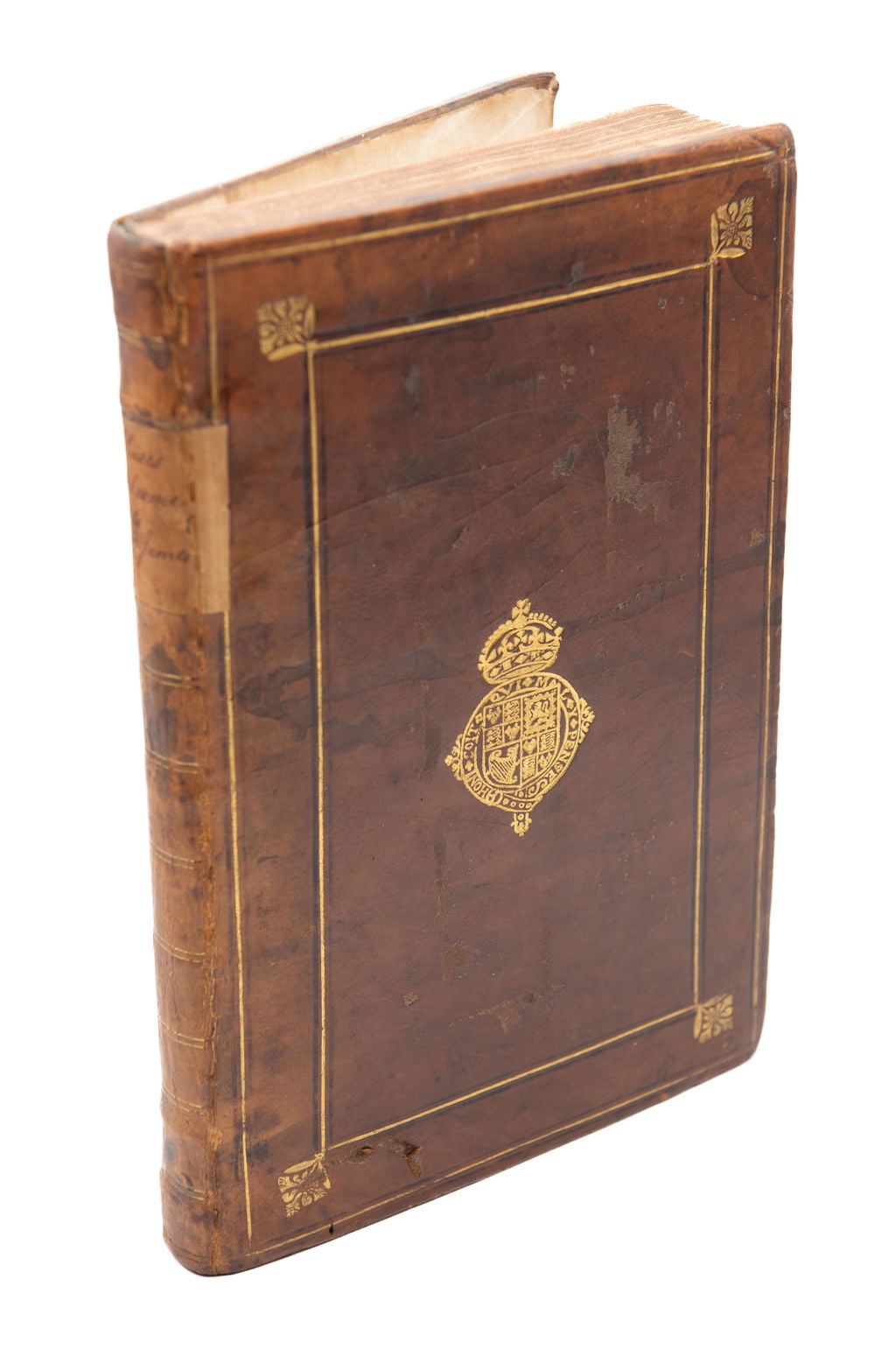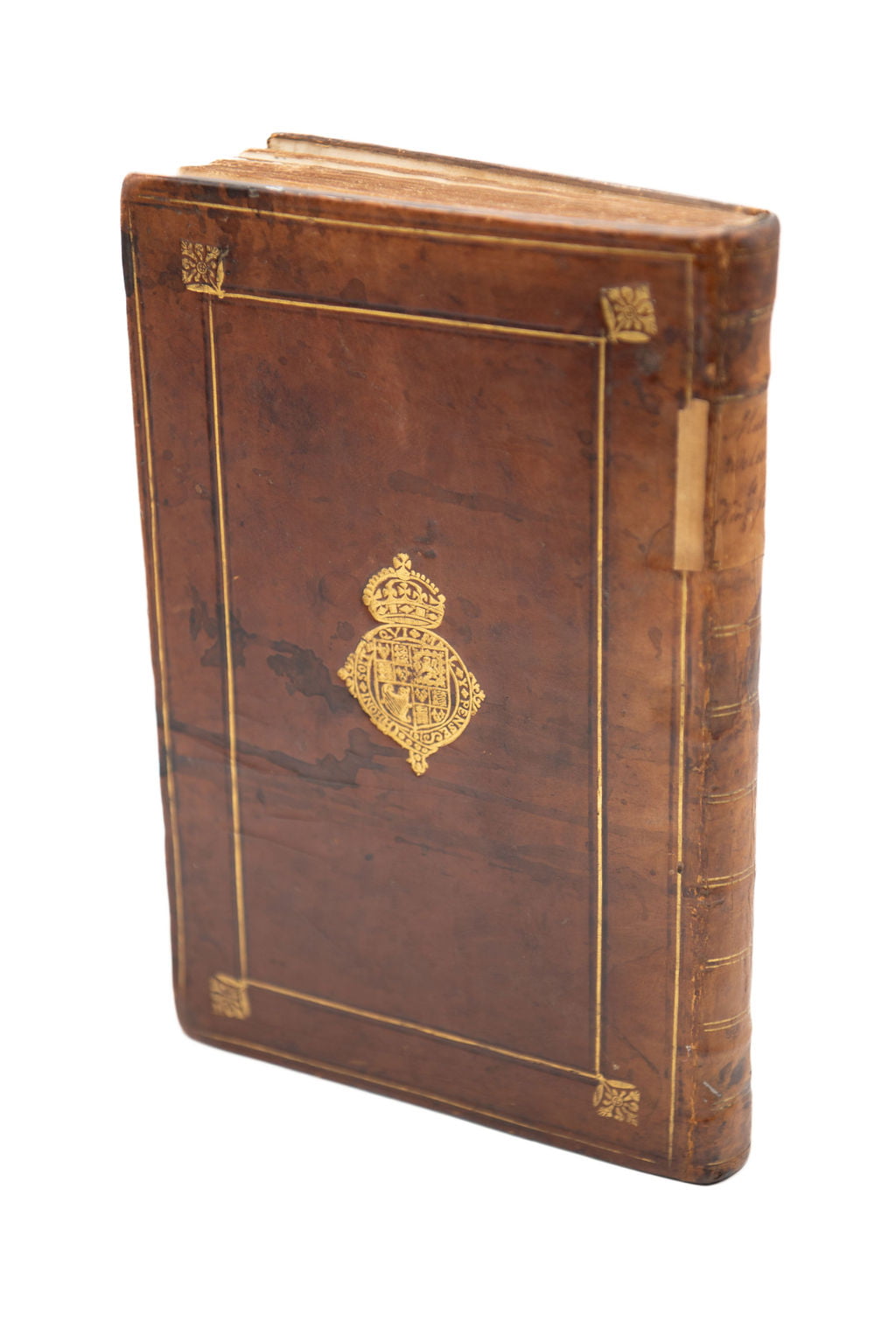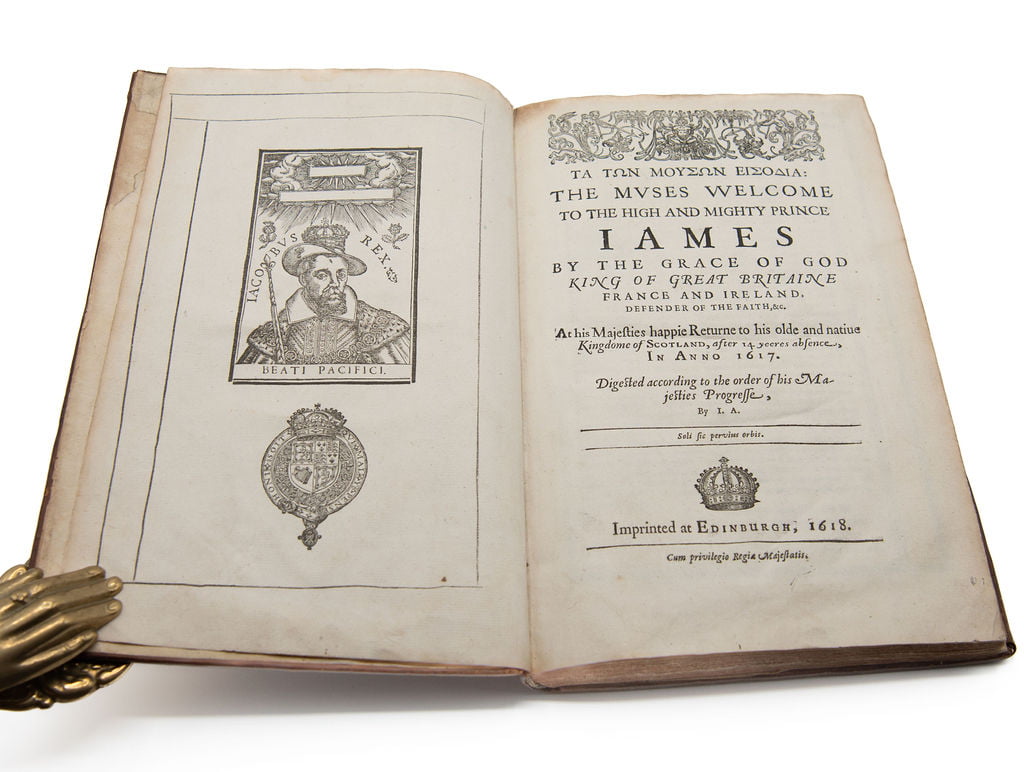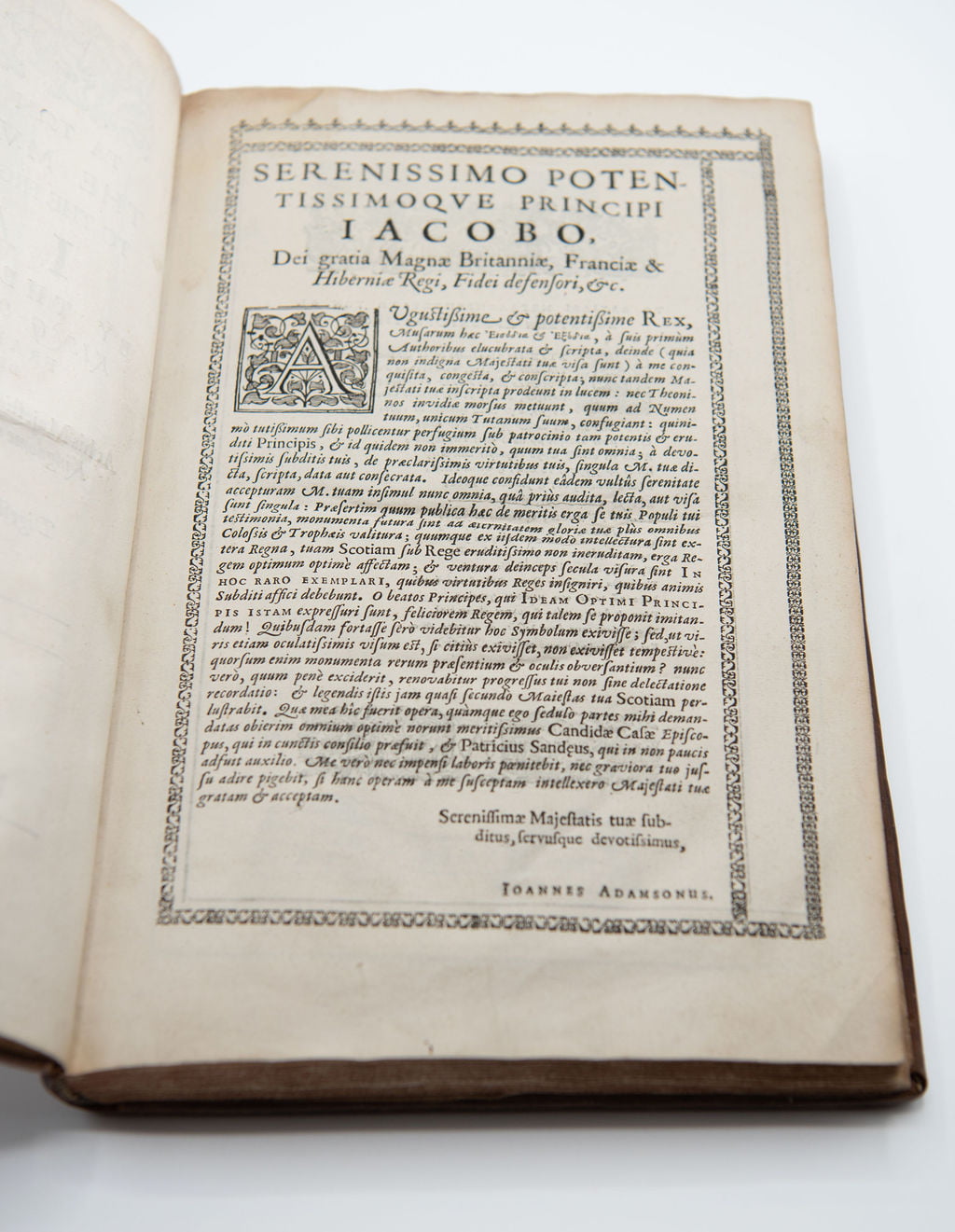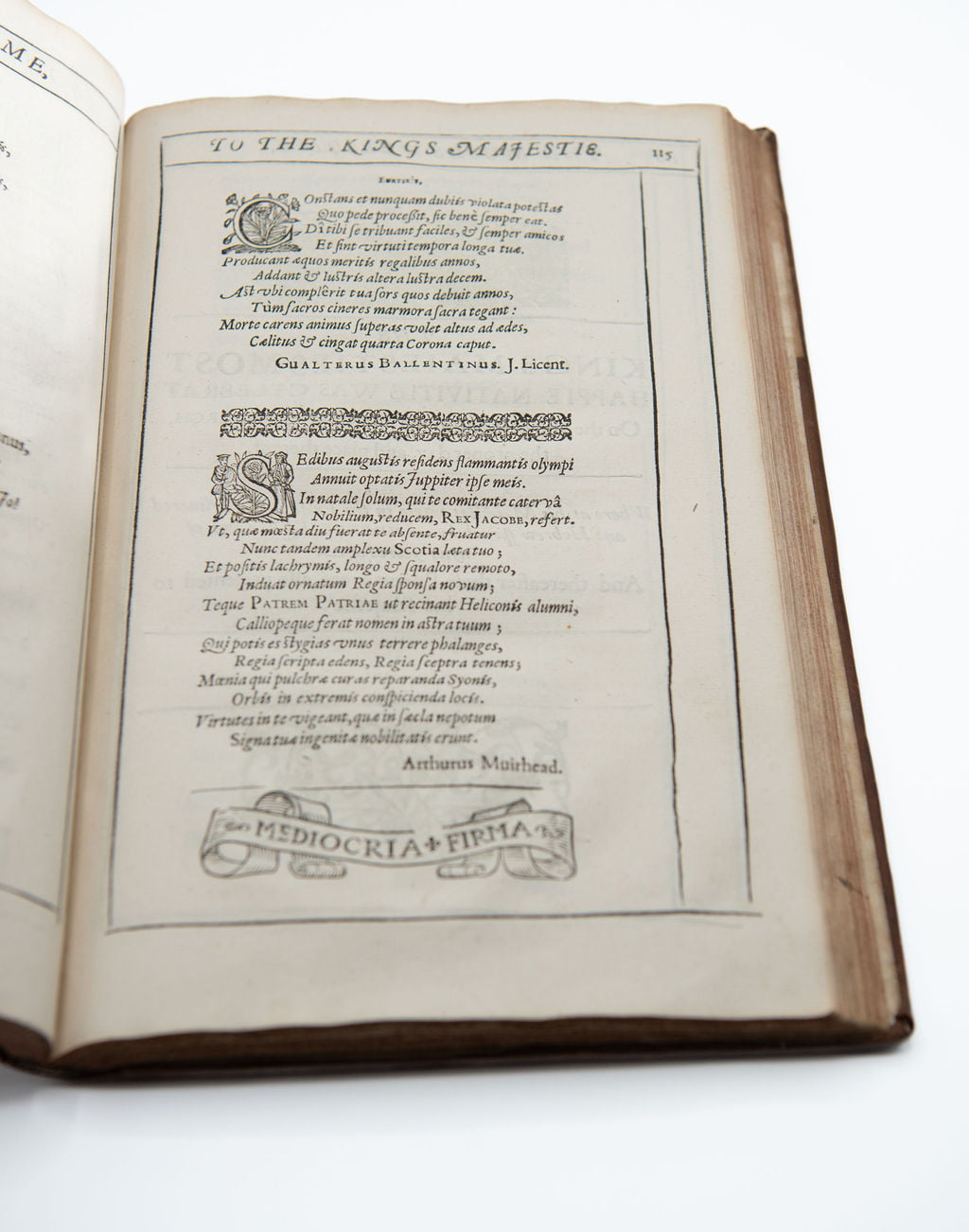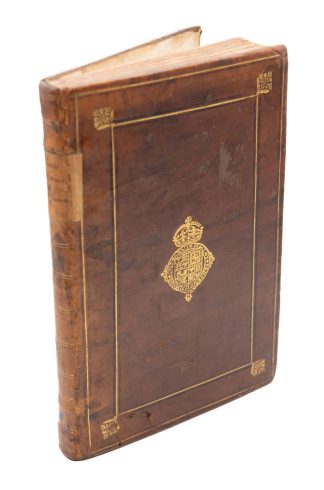ADAMSON, John
A ROYAL COPY
1) Ta t n Mous n eisodia: The Muses vvelcome to the high and mighty prince Iames … At His Majesties happie returne to his olde and natiue kingdome of Scotland, after 14 yeeres absence in anno 1617; 2) Ta t n Mous n exodia. Planctus, & vota Musarum in augustissimi monarchæ Iacobi Magnæ Britanniæ, Franciæ, et Hiberniæ Regis, &c. recessu è Scotia in Angliam, Augusti 4 anno 1617
1) Edinburgh, [s.n.], 1618; 2) Edinburgh, Excudebat Andreas Hart, 1618£29,500.00
FIRST EDITION, second issue. Folio. 1) [viii], 44, [ii], 45-[138], 137-289, [i]. 2). Italic letter with some Roman and Greek, text within box rule. Woodcut portrait of James I with his arms below as frontispiece, large historiated initial on first leaf, with large grotesque headpiece with James I arms above, woodcut floriated initials many grotesque and floriated woodcut head and tail-pieces, typographical ornaments, “A reissue of STC 140 (Edinburgh: Thomas Finlason, 1618) with cancel title page and dedication printed by A. Hart; three preliminary leaves cancelled and replaced by two. In this reissue line 3 of title reads “to the high and mighty prince”. Page 109-12 are a cancel bifolium printed in London by the Eliot’s Court Press. … Quire M also a different setting to STC 140. In this setting signature “M2” is below the “frugi” of “frugibus”.” ESTC. “Lord in thy roth is” in contemporary hand on pastedown, two early shelf marks above and below, engraved bookplate of Robert Pirie at side. Very light age yellowing, very rare marginal marks. A fine copy, absolutely fresh, on thick paper, in excellent contemporary calf, covers double blind and single gilt ruled to a panel design, large fleurons gilt to corners of outer panel, arms of James I gilt at centre, spine double gilt ruled in compartments, all edges red, spine a little sunned
First edition, second issue, with the portrait of James I, of this important collection of neo-latin poems, epigrams, and panegyrics, all dedicated to James I on his return to Scotland in 1617. On the 15th of May, 1617, King James VI & I landed at Port “Seatown” (now Seton) to begin what would be his only homecoming tour of Scotland. since leaving Scotland 14 years earlier. James stayed in Scotland until the beginning of August of that year and, although primarily resident in Edinburgh, he spent much of his time touring his northern kingdom. James visited Scotland under the pretence of celebrating his fiftieth year as King of Scotland; however, the political motives of James’s trip to his homeland are now clear in hindsight: his main objective was to try to align the Church of Scotland more to the Anglican Church, evident in his passing of the Five Articles of Perth in the year following this tour. During James’s visits to the cities, towns, villages and boroughs of Scotland many formal presentations of verse and addresses were given to the King. In 1618 a collection of these poems, addresses and a record of where the King and his entourage visited was printed in Edinburgh. The first work is a collection of poems, speeches and philosophical discussions, mostly in Latin. It is found in various states and is frequently accompanied by the second work, a further collection of Latin poems written by Scottish authors including David Hume of Godscroft and David Wedderburn on the occasion of James’s return to England. It was edited by John Adamson who refers to the work in the dedication to the first work.
“With over sixty individual contributors, it includes many more Latin poets that the Delitae Poetarum Scotorum, and all of them write at the same point in time and in the same context, namely the return of King James VI and I to Scotland, after fourteen years, in 1617. Its acclamations are delivered with considerable ingenuity and skill in more than 130 poems, which range in length from short epigrams to much longer hexameter panegyrics. Such an assembly of verso to celebrate an itinerant sovereign has few if any parallels in any neo-Lain context. Moreover the Muses Welcome is presented as a travelogue: a record, with precise dates, of the king’s journey or ‘progress’ through some fifteen towns and other places in his northern realm, from Dundee to Drumlanrig (two visits are noted for Stirling and at least two for Edinburgh). .. The Muses Welcome is a snapshot of Scotland in a particular summer, or rather a group photograph (one of the livelier kind). A real work of cerebration as well as celebration by Scottish towns and cities The Muses Welcome is testimony to Scotland’s cultural and educational achievements, at a moment which coincides with the zenith of Scottish Latin verse. Finally … The Muses Welcome is a delight to handle and peruse, because of its generous dimensions its use throughout of a large Italic font, its ample spacing…This fine appearance is hardly surprising, for it was commissioned by the King himself .. and entrusted by him to Edinburgh’s leading printers. He also made careful provision for the distribution of eighty copies, which may or may not comprise the whole print run.” Roger P.H. Green. The King Returns: The Muses’ Welcome (1618). This copy, richly bound with his arms is most certainly one of the copies made for distribution by the king.
The Muses Welcome is truly a treasure trove of early seventeenth-century poetry and includes unattributed dedications by Sir Francis Bacon, identified by his family’s motto “Mediocra Firma” found at the foot of his dedications (3rd leaf recto, pp. 115, 153, 168). A very fine copy of this most important work, most probably a presentation from James I.
1) ESTC S126015. STC 141. 2) ESTC S106780 STC 142.In stock


